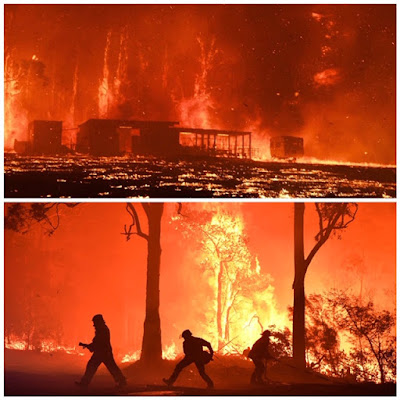This has caused havoc with the vintage all along the coast.
Grape sugars are not developing, thin skinned varieties eg. Semillon, are splitting and it is a constant battle to keep fungus, especially botrytis, at bay.
So we decided to pick our Semillon early.
Sugar level was around 10.5 Baume which means a wine around 10.5% alcohol, low by most standards. This is commonly known as a Hunter style as that particular famous wine growing valley north of Sydney suffers from the same climatic problems that we do and they have been picking their Semillon early off and on for decades. This is a unique wine which shows, early on in its life, grassy apple like qualities with obviously good acidity. However it ages amazingly to a toasty honey like flavour. It can have a bottle life of up to thirty years.
Picking started on a cloudy but fine day and we managed to get around 230kg of relatively clean fruit from our four rows.
I had never made white wine in my vineyard before and it was quite a steep learning curve being responsible for all aspects.
White juice is more sensitive to oxidation than red and it is necessary to take specific steps to prevent that from happening.
The right quantities of sulphur dioxide and a co antioxidant, ascorbic acid (vitamin c) have to added at the right time and levels constantly monitored.
This involves quite a deal of laboratory work.
Other additives include DAP a yeast nutrient to help avoid "stuck" fermentations and pectic enzymes which assist in releasing the juice from the crushed grapes.
We also added bentonite to the juice. This is a clay that is used to clarify the wine after fermentation and it is better to add it in at an early stage in the process so as to avoid an additional step that could encourage oxidation.
The grape bunches went through the crusher/destemmer quite easily compared with Cabernet Sauvignon thanks to the thin skins and we achieved a very good juice yield.
This free run juice was immediately drained off from the crushed grapes (the must) through a basket press and the remaining skins, seeds and pulp (the marc) were given a light pressing to extract more. We avoided a hard pressing so as not to include any tannic materials that would show up in the wine later.
The marc was returned to the vineyard as a soil conditioner.
The juice was then transferred to stainless steel tanks and innoculated with a specific yeast culture. There are plenty of wild yeasts on the grapes that could do the job but this is fraught with danger as some can be slow, others can cause off flavours and some even spoil the wine.
Fermentation started about 24 hours later and is continuing.
The problems of grape growing in the Shoalhaven Coast region was a hot topic at the South Coast Wine Show Presentation Dinner last Friday night, especially as it was sometimes difficult to hear the speeches over the roar of rain on the restaurant roof.
All the details of the wine show as well as results can be found on:

























1 comment:
looks like so much fun. next trip we're coming during harvest! ps-like the new look of your blog too!
Post a Comment